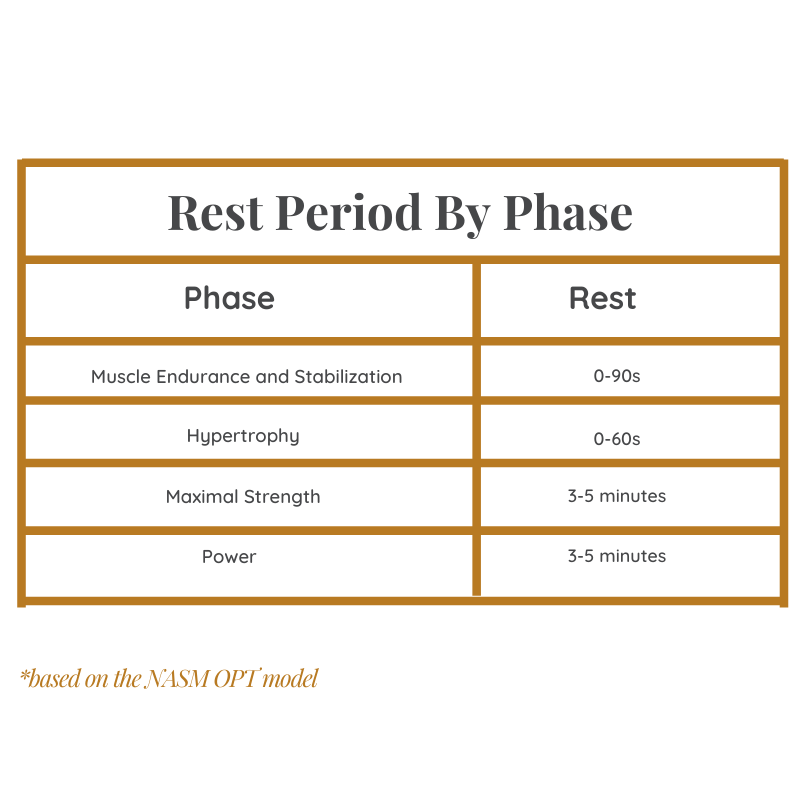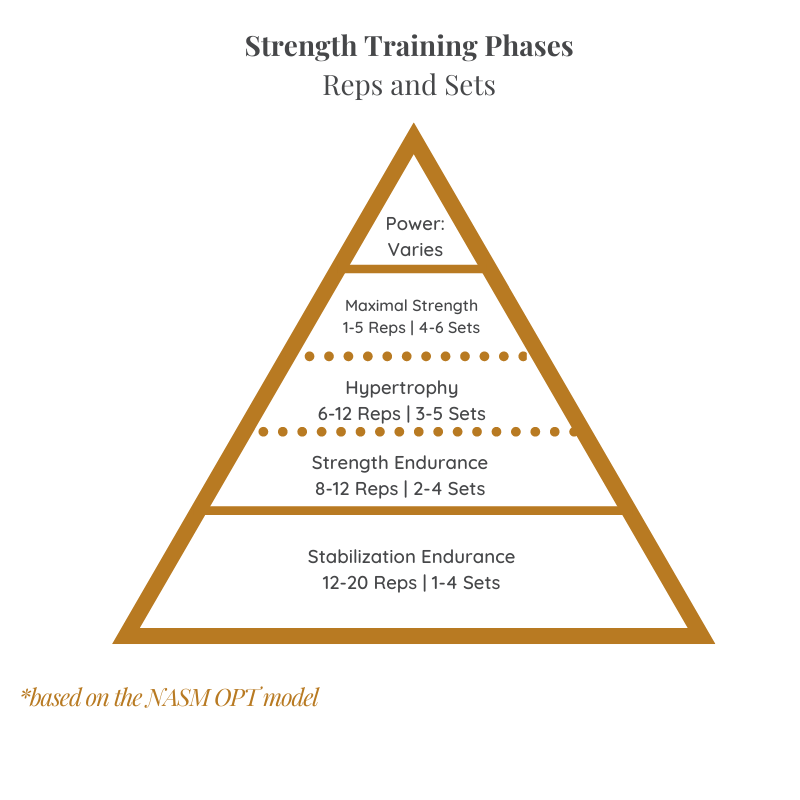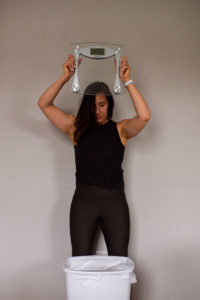So its your first time working out and you have NO IDEA what to do.
You walk into the gym on January 2nd (or let’s be real, Monday the 4th) and feel overwhelmed and panicked. So you decide to just head over to one of the ellipticals- you’ve used that machine before, and certainly you couldn’t make a fool of yourself by riding that for 30-45 minutes. Something is better than nothing, right?
You’re not wrong. Something is better than nothing and we all have to start somewhere! But most likely, you’ve been down this road before and either gotten bored by using that trusty elliptical day after day without switching things up, or gotten frustrated because you’re putting anywhere from 30-60 minutes in and not seeing changes. Let me help you do better this year…
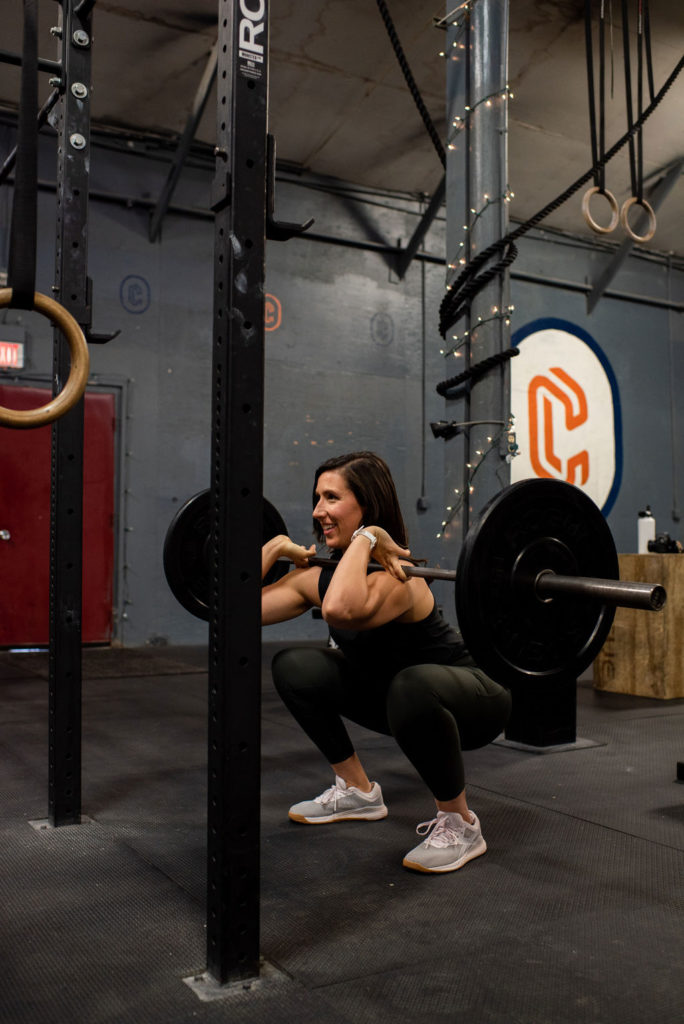
Let’s first address a hierarchy of importance when it comes to working out and what will make a real difference for you.
1. An active lifestyle. If you are popping into the gym for an hour a day 2-4 times per week but are full on sloth the other 23 hours of the day, it might be hard to see any progress. Start by scheduling one 20 minute walk each day and build on that until you can achieve 7-8K plus steps per day- this is the amount science tells us makes a significant difference.
2. Incorporate a strength training routine. This is by far is the next most important piece. Though strength training does not burn as many calories as cardio in the moment, it builds muscle which is more metabolically active. Meaning: it makes a difference the other 23 hours of the day. It raises your resting metabolic rate- meaning you can work less to burn more.
3. Including cardio you enjoy and that aligns with your goals. Here’s the thing: everyone is going to have a different opinion here. Some will say that small bouts of higher intensity cardio (think treadmill sprints, a Peleton HIIT workout or a Crossfit metcon) will have more of an effect. Some will say longer duration, lower intensity work (going for a jog, bike ride, or hopping on that elliptical) will make more of a difference. My professional opinion? Pick something you enjoy and that is at least a 5-6 on the RPE scale. Meaning: if you can talk on the phone or read a book while you ride that bike/elliptical- we probably gotta up the intensity. CDC recommends 150 min/week of moderate intensity or 75 min/week of vigorous intensity.
Now, let’s dive a bit deeper, shall we?
Because I know from my own personal experience that the strength training piece is the hardest part for most folks to master. It takes more mental effort (How many sets of what reps? Which one am I on? What’s the difference between a deadlift and an RDL again?) and most people have less experience with it.
My goal today? To help your wrap your head around building a strength training workout for yourself! Below are some tips on how to put together an effective total body strength training workout.
Step 1: What the heck are your goals?!
There are many to choose from, but the most popular ones I hear are:
– Lose weight
– Lose body fat
– Build muscle
– Get stronger
– Feel better
– Increase endurance
Many of these go hand in hand but some can conflict depending on what’s going on with your diet (i.e. it’s tough to lose fat and build muscle at the same one- one requires a caloric deficit, the other requires a surplus). The good news? If you’re new to strength training, “newbie rules” apply and you might be able to achieve a lot of these at the same time just by starting.
We also must keep in mind sport specific goals. If your goal is to run a mile for the first time, strength training will help in some ways, but you’ll also just have to get out there and run!
Step 2: Determine how many days you’ll strength train.
My advice would be to start with two and work your way up to 3-5. Here are some options for how to structure your weekly routine:
Two days:
Total Body/Total Body
Push/Pull
Upper/Lower
Three Days:
Push/Pull/Total Body
Upper/Lower/Total Body
Upper Push/Upper Pull/Lower Body
Four Days:
Push/Pull/Push/Pull
Upper/Lower/Upper/Lower
Isolated muscle groups:
Knee Dominant/Hip Dominant/Shoulders + Chest + Triceps/Back + Biceps + Core
Five Days:
Push/Pull/Total/Push/Pull
Upper/Lower/Total/Upper/Lower
Knee Dominant/Hip Dominant/Core + Arms/Chest + Shoulders/Back
Not sure what some of these mean? What’s a push? What’s a pull? What the heck is knee and hip dominant? Keep reading…
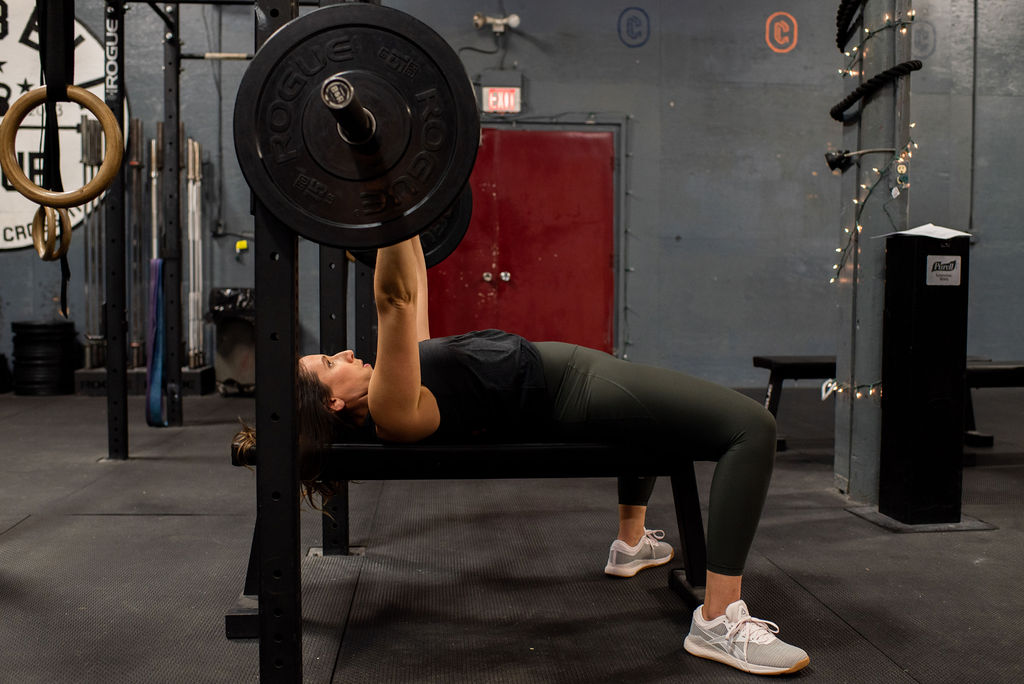
Step 3: Movement Selection
Generally, we can build a really great total body workout by using 1-2 movements from each of these categories:
Knee dominant: Squat, Lunge, Split Squat (aka Lower Push Movements)
Hip Dominant: Deadlift, Romanian Deadlift, Single Leg Deadlift/RDL, Glute Bridge, Hip Thrust (aka Lower Pull Movements)
Upper Push: Bench press, Dumbbell Press, Squeeze Press, Shoulder Press, Arnold Press, Pushups, Front Raises, Dips, Skull Crushers, Tricep Extensions
Upper Pull: Pendlay Row, Bent Over Row, Single Arm Row (basically any row variation), Pullover, Pull-up, Chin Up, Lat Pulldown, Bicep Curls
And if we’re feeling confident, adding some of these could be helpful:
Anti Rotation: Pallof Press, Renegade Row, Cable or Band Chops, Landmines, Single Leg Deadlift (see how some exercises go into more than one catgory? #efficiency)
Isometric Holds: Plank, Side Plank, Hollow Hold, Deadbug, Bird Dog (for core), Active Bar Hangs, Pull-up/Chin-up holds, adding tempo to a lot of the above exercises will incorporate isometrics
Carries: Farmer’s Walk, Suitcase Carry, Waiter’s Carry, Front Rack/Double Front Rack, Bottom’s Up, any mix of these (i.e. Front Rack + Suitcase
Keep in mind the hip dominant exercises don’t mean knees are absent and vice versa. Many exercises in those categories have some variation that takes them close to the other side (i.e. forward lean in split squats can make it a more hip dominant exercise).
The good news here is that you can get a lot of these basic push/pull movements in with a couple sets of dumbbells. So if you’re training at home, don’t be discouraged- a super basic setup can get the job done.
Step 4: Choose Sets and Reps
Just starting? A great place to begin is the “Stabilization Endurance” phase that uses 12-20 reps over 1-4 sets. Incorporating some balance and core here is helpful (the second group of exercises from Step 3). Rest 0-90 seconds between movements. Once we get past that phase, we want to think about your specific goals.
If you’re trying to build strength (aka feel better, get stronger, gain muscle):
Strength Endurance
For beginners:
Sets: 2-4
Reps per exercise: 8-12
RPE: 6-8
Rest: 0-90 seconds.
Maximal Strength
For more advanced/experienced lifters trying to gain maximal strength:
Sets: 4-6
Reps per exercise: 1-5
RPE: 8-10
Rest: 3-5 minutes
Hypertrophy
For those working out for aesthetics (aka want to look “lean” or “toned”):
Sets: 3-5
Reps per exercise: 6-12
RPE: 7-8 for beginners, 7-10 for advanced
Rest: 0-60
A good rule of thumb is to aim for 10-20 total sets, per major muscle group, each week.
Curious how cardio fits into this plan? Got more questions? Leave them below and I might make some more posts on the topic for you!

